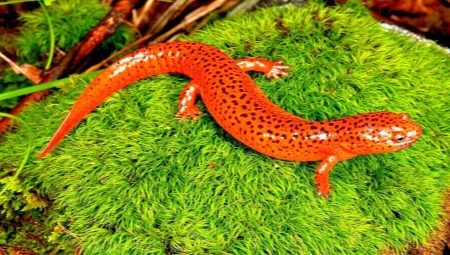Today it has become fashionable to keep exotic animals at home, which is why not only fish, but also newts can be found in aquariums for a long time. They belong to amphibians, which means that they can live both in water and on land, therefore they require the creation of special conditions of detention.

Description
Tritons can be found in various parts of the world: they live in the Americas, as well as in Asia and Europe. Despite this, finding them in nature is quite problematic, since these creatures lead a nocturnal lifestyle.
Amphibians can have a very different color depending on the subspecies. The length of the body varies from 7 to 30 cm, while most of the length falls on the tail. The membranes are clearly visible between the fingers on the paws, due to which the newts are able to move in the aquatic environment.
Amphibians reach puberty by 3 years. During spawning, females become brighter, and male representatives have a back crest from the head to the tail - it looks very impressive.
Tritons are distinguished by a sharp sense of smell, but their vision is poor - they are able to distinguish only moving objects.
Like the rest of the amphibians, newts are cold-blooded, so their body temperature is low - in the range of 10-15 degrees.
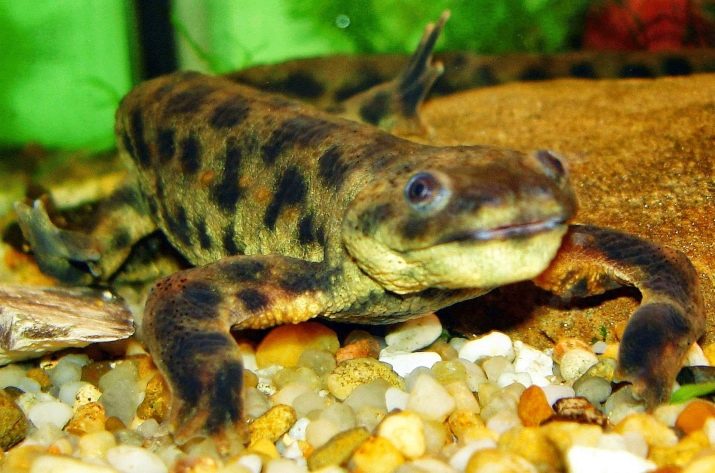
Varieties
Tritons are a large group of caudate amphibians, which has over 20 species, and they, in turn, are also divided into various subgroups and subspecies. Wherein not all of them are suitable for home maintenance. Most often, one of the following species is grown in artificial reservoirs: ordinary, comb or needle. Let us dwell on the description of each of them.
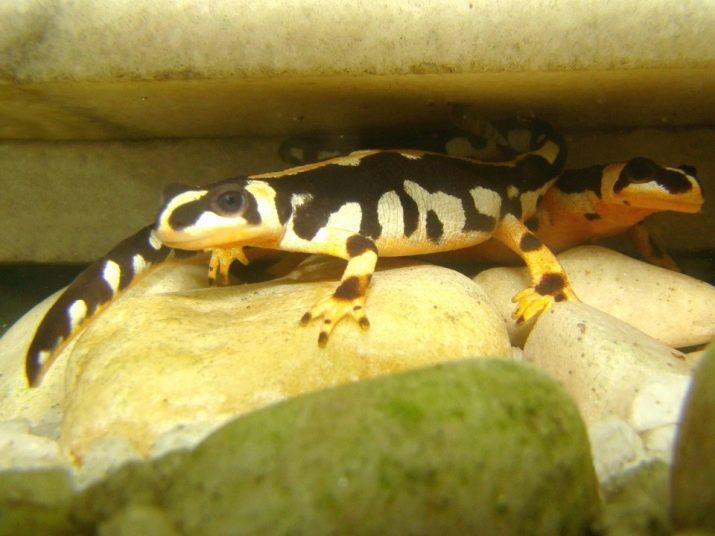
Ordinary
This amphibian grows only up to 10-12 cm, it is characterized by an olive back and a dark yellow abdomen, which gives the newt a somewhat mysterious and mystical appearance. These amphibians are usually dotted with a galaxy of light specks, three lines located longitudinally are visible on the head. In males, a scallop grows from head to tail.
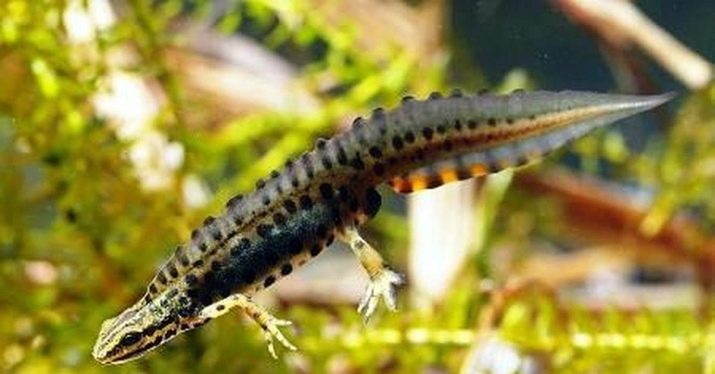
Comb
This amphibian is much larger and more impressive than its ordinary relative - the size of such creatures reaches 18 cm. As a rule, amphibians are painted in brown and black, the belly is orange, with a large number of spots. From the name you can understand that these creatures also have a crest, but it is slightly shorter than that of ordinary varieties. In case of danger, the skin glands of comb newts emit a toxic secret, therefore, keeping such pets in aquarium conditions requires caution.
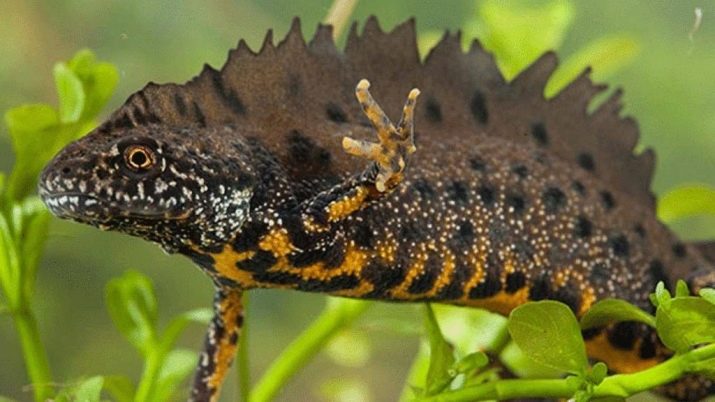
Sparkling
This is the largest amphibian suitable for home maintenance. The length of the body of the needle-shaped newt reaches 30 cm. The creature got its unusual name because of the ribs sticking out from the side: at the stage of rest they are invisible, but as soon as the animal begins to worry, the ribs immediately open, resembling sharp needles. These amphibians have a characteristic greenish color and a yellow abdomen, the body is strewn with dark dots.
Less common red-bellied triton.
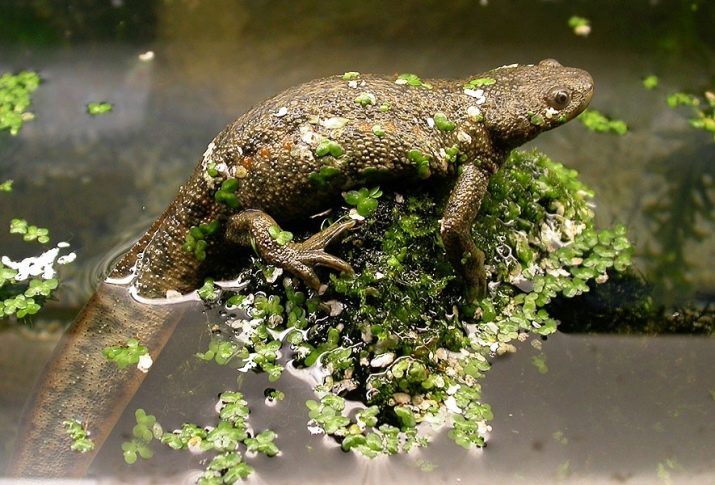
How many live?
When creating comfortable conditions, newts can live up to 20 years, but, as practice shows, their average life expectancy in vivo rarely exceeds 7-10 years. This is not surprising, because human activity has led to the fact that most of the water bodies are polluted, causing a significant reduction in the population. In addition, in the natural environment, newts have many enemies, which also affect the quality of life of these small amphibians. All this led to the fact that many varieties were even listed in the Red Book.
Like many other amphibians, newts are sensitive to fluctuations in environmental conditions, and if they change, they have a variety of diseases.
That is why When buying a new pet, be sure to keep it separate from the other inhabitants of the aquarium. The quarantine period must be at least 2 weeks.
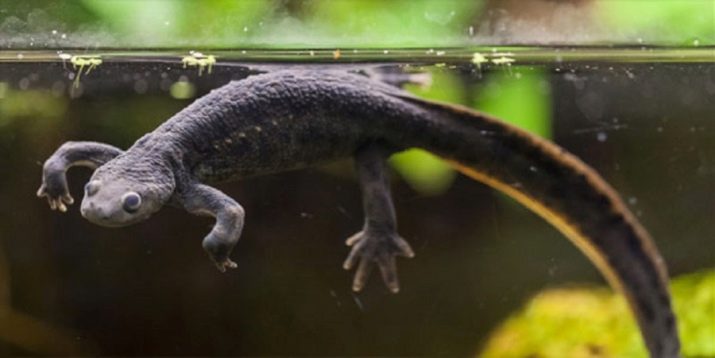
Most often, newt diseases are associated with disorders of the digestive system. So, at the slightest stress, they develop anorexia, and when swallowing fractions of the soil, the pets suffer from intestinal obstruction. In addition, these animals often encounter parasites, and the presence of the latter often causes in newts pneumonia, which in most cases ends in death.
Like many other aquarium inhabitants, amphibians often encounter fungal infections that affect not only the external integument, but also vital internal tissues and organs.
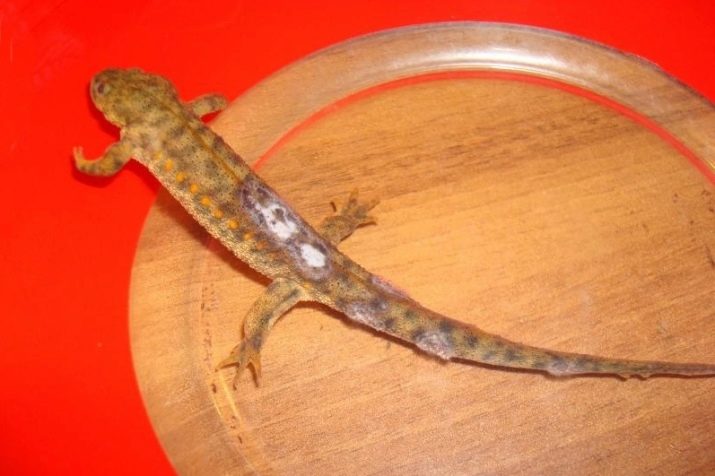
One of the most common diseases of newts is sepsis, better known as the "red foot". This is a pathology of an infectious nature, which is caused by toxins that enter the bloodstream. Such a disease is borne by animals rather hard and most often leads to the death of a pet. Another problem is dropsyIt is associated with the accumulation of fluid in all tissues of the animal. A similar problem often arises if the amphibian is malnourished.
If you notice changes in the behavior and appearance of the animal, it is very important to make the correct diagnosis in time, which is why it will be right to turn to professionals who can prescribe competent treatment for your amphibian.
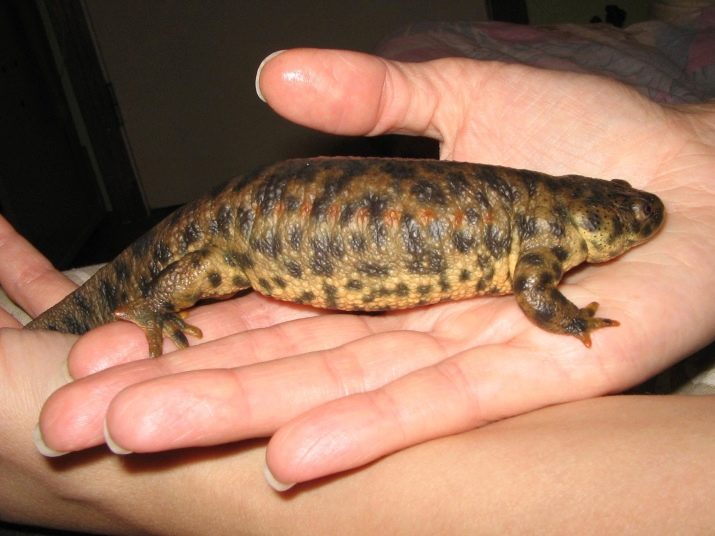
Compatibility
For the content of newts, it is desirable to use an aquaterrarium intended for individuals of one subspecies.Moreover, for some of the most aggressive varieties, for example, pachytritone or Asia Minor Triton, a significant limitation of the number of pets within one tank is required, and for each, shelter is required. Related species of newts, for example, blue-tailed and dwarf amphibians, can be kept together. However, at the same time, their relationship must be controlled and, at the first signs of aggression, seated in separate containers.
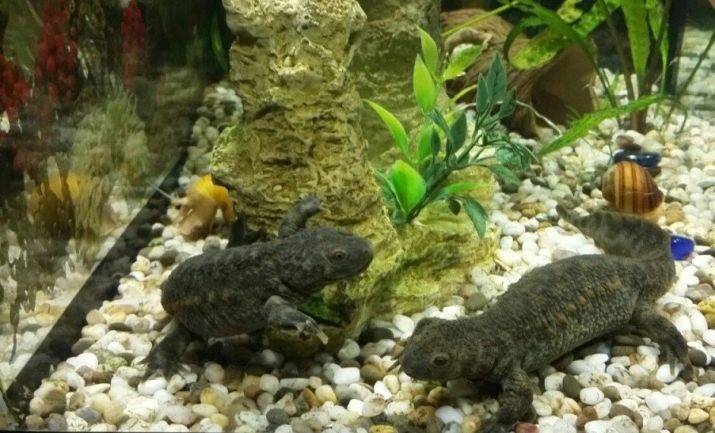
The joint maintenance of amphibians with fish is not recommended and there are several reasons for this:
- fish and newts require different conditions of detention: a slightly elevated temperature is comfortable for fish, and they need more space;
- large predator fish often harm the newts, while small fish themselves can become the prey of these amphibians;
- many amphibians emit toxic mucus from the skin, which is dangerous for all species of fish;
- in the presence of fast and brisk fish in the tanks, the tritons often lack food - in this case, the owners can only feed each of them with tweezers.
Due to food competition, placement of newts with other aquarium inhabitants is not recommended: frogs, turtles.
However, if you want to be colorful, then as an exception you can put "neighbors" to some warm-blooded varieties of newts, for example, Spanish and dwarf.
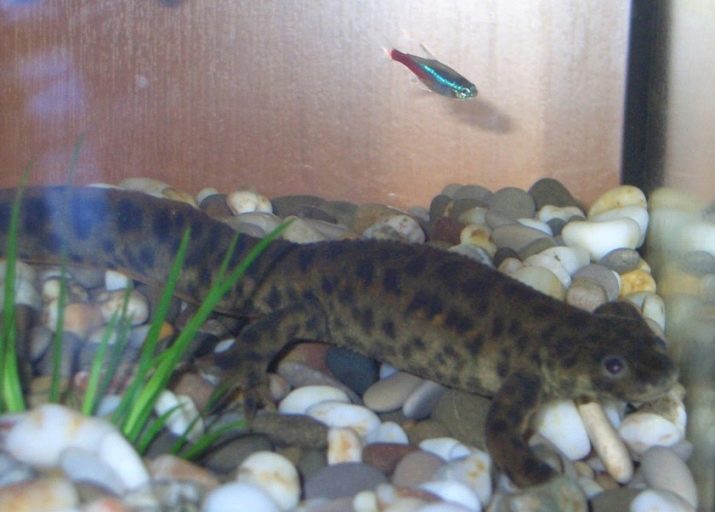
They can make a successful company:
- unpretentious medium-sized fish (guppies and pecillia);
- medium-sized varieties of catfish - it is best to plant corridors in the aquaterrarium;
- cherry shrimp, but be prepared for the fact that their young growth will go straight into the mouth to the voracious newts;
- hymenochiruses;
- large and beautiful snails, for example, the newt coexists well with blueberry and blue ampoules.
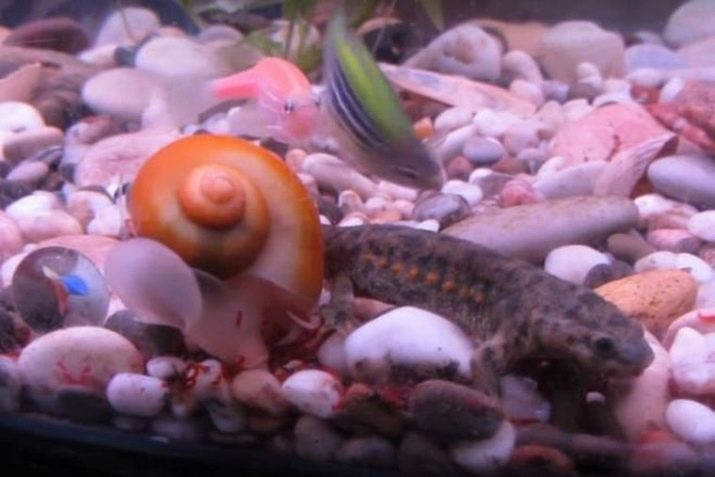
Growing conditions
So that the newt decorates the aquarium as long as possible and delights its owners, it is necessary to create the most comfortable conditions for its existence.
- Aquarium. Horizontal aquariums are necessary for keeping aquarium tritons, and their volume should be such that at least 20-30 liters of water per animal. If you are determined to purchase a group of amphibians, then keep in mind that they will need a large space.
- Temperature. Tritons, like many other amphibians, belong to cold-blooded animals, because any change in temperature is the most detrimental effect on their health. A suitable temperature for them is an indicator of 18-21 ° C of heat. It is in such water that they live in the natural environment, elevated temperatures for these aquarium amphibians are unacceptable.
- Acidity. For the full growth and development of newts, water with acidity parameters in the range of 5.5-7.8 pH is required.
- Rigidity. Water in the aquarium must certainly be soft or medium hard - at the level of 5-15 dGH.
- Lighting. To create comfortable lighting, it is better to give preference to fluorescent lamps. All other sources of illumination heat the water, not making the living conditions of pets comfortable.
- Priming. The choice of substrate must be treated with special care. Coarse-grained soil will be the best option, otherwise, when eating food, an amphibian can accidentally swallow a pebble, and this will lead to the death of the animal. Try to minimize all existing risks in advance.
- Water cooling. The need for these manipulations arises in the hot season, as well as if the room temperature is set much higher than recommended. To bring it to standard indicators, special cooling units are used, and if there are none, then you can use bottles of chilled water that are placed inside an artificial reservoir.
- Decor. Keep in mind that newts can live both in water and on land.Therefore, it is necessary to provide for small dry areas where they could rest, because such amphibians like to soak up the air from time to time. If you have placed a pet in a tank with fish, be sure to place an island, houses and various shelters in the aquarium, this requirement is explained by the fact that the newt is extremely unsociable. As for plants, preference should be given to living ones, as females, laying eggs, have the habit of wrapping them in leaves.
- Filters. For tritons, the most standard internal filter will be sufficient. Creating an aeration system is not so important - these pets crawl out to the surface for air. But what is of fundamental importance for newts is cleanliness, so every week you should change the water by about 20-25%.
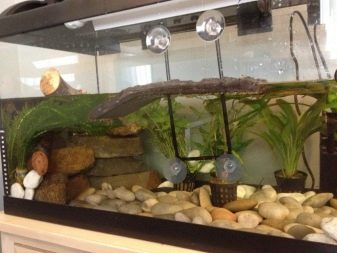
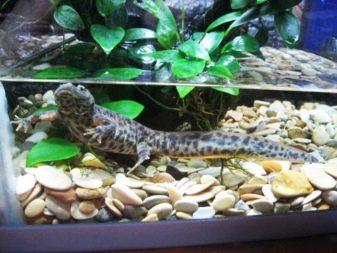
What and how to feed?
Each person who wishes to become the owner of newts immediately wonders how to feed these amphibians. Pet fed in a day, for this use ground earthworms, you can give bloodworms and small fish. Nutrient and healthy will be gruel from minced fish and grated liver - for amphibians this option will be the best.
In order for the newt to remain healthy and have an impeccable appearance, it is necessary to enrich the feed with minerals and trace elements.
For this, pet food stores sell special food for amphibians - they contain calcium and many other useful trace elements. Amphibians do not eat plants, so you can not worry about their safety.
It is better to feed the fry every day, because they are actively growing and they need a lot of food. At this time, you need to focus on protein foods: insects or small crustaceans. After the kids are a little older, they need to include bloodworms and tubule in their diet. You can feed your pet in the water, but it’s better to give him food with a little tweezers. Otherwise, the residues will sink to the bottom and clog the aquarium.
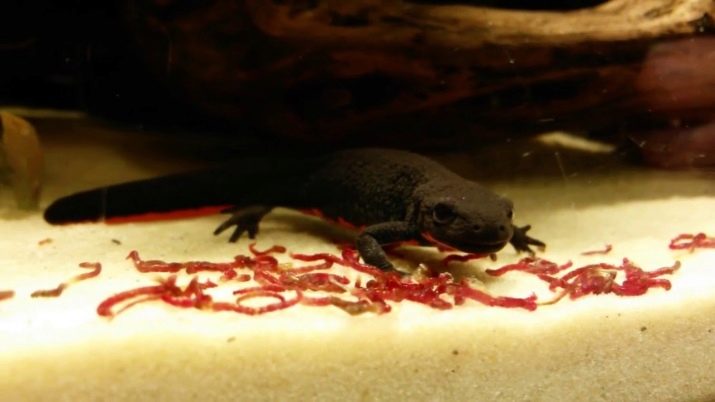
Breeding
Reproduction of newts in most cases takes place without any difficulties. The spawning period usually occurs in early spring. Watching animals during mating games is very interesting: usually males are very active, while they begin to sparkle with bright colors, and a pearly shine appears on the scallop. The female does not possess such ability.
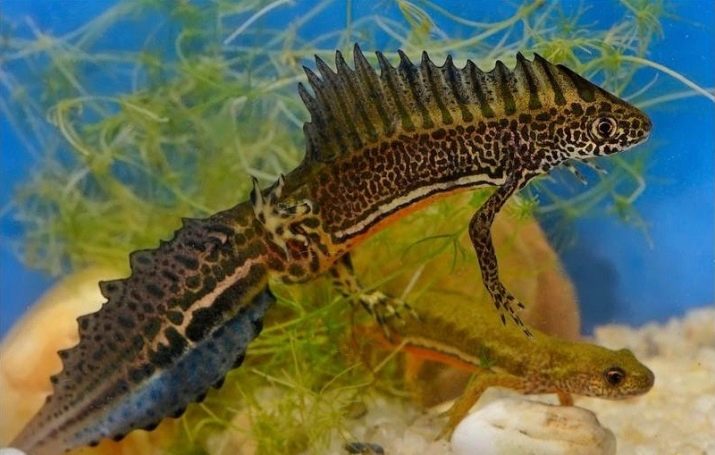
At this time, the water temperature should be reduced to 6-15 degrees, a pregnant female is best to plant in a separate aquarium, where she can throw eggs on algae leaves. After 20-30 days, larvae appear. It is desirable that there are many living plants in the aquarium that will create a shadow, in addition, fearful babies will be able to hide in these thickets. For young animals, a temperature of 18 degrees is considered a comfortable temperature. At the age of 3 months, newt cubs already look like adult amphibians.
Caring for newts, although it has some nuances, does not require much effort and cost from its owner. Moreover, these animals will be a good alternative to traditional cats, dogs and rodents for those who are allergic to animal hair.
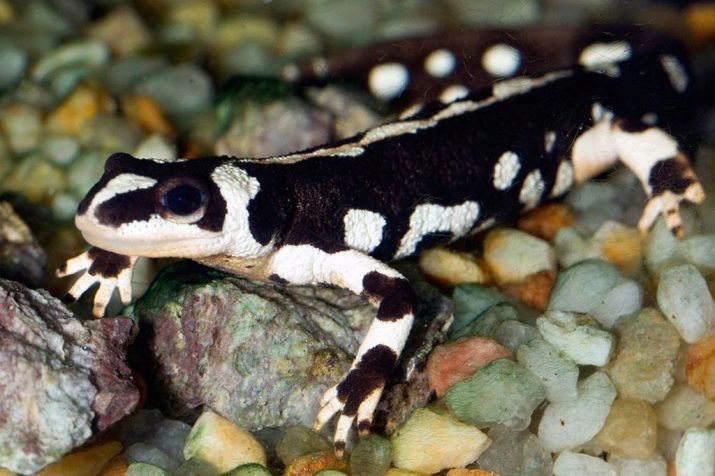
About the features of the triton content, see the next video.
